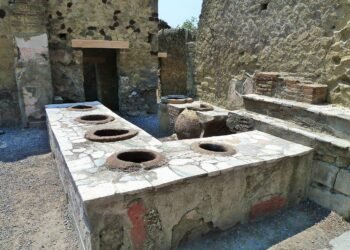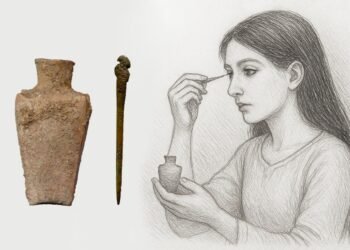A metal detectorist exploring the mountains of Vestre Slidre in southern Norway stumbled upon a pristine Byzantine gold coin believed to date back to the late 10th to early 11th century.

The Innlandet County Municipality unveiled the find, describing it as an exceptionally rare histamenon nomisma, a solid gold coin minted in Constantinople around 960 CE, featuring depictions of Jesus Christ and co-reigning emperors Basil II and Constantine VIII.
The coin, the only one of its kind ever found in Norway, has astounded archaeologists with its near-perfect preservation. Officials from the municipality noted that it appears largely unchanged from the time it was lost, potentially a thousand years ago.
Intriguingly, the coin bears inscriptions in both Latin and Greek, with one side proclaiming “Jesus Christ, King of those who reign” and the other declaring “Basil and Constantine, emperors of the Romans.”
Experts believe the coin may have traveled over 1,600 miles from its origin site, speculating on its potential ties to the Varangian Guard, a group of northern Europeans, including the future King Harald III, who served in the Byzantine Empire.
Harald Hardrada’s connection to the Byzantine Empire further fuels speculation. A member of the Varangian Guard around 1034-1042, Harald reportedly sent treasures acquired during his service to Prince Yaroslav in Kiev, contributing to a dowry for his marriage to one of Yaroslav’s daughters, Ellisiv. The coin’s depiction of Basil II, Ellisiv’s great-uncle, strengthens this familial connection.
May-Tove Smiseth, the county archaeologist for Innlandet suggested it could be part of the immense wealth Harald and his men brought back to Norway in 1046. Professor Svein Harald Gullbekk, an expert in coins, affirmed the rarity of the Byzantine coin in Norway.
While the exact route the coin took to reach Norway remains unclear, the discovery site’s location in Vestre Slidre, part of the historic area of Valdres, raises intriguing possibilities. The region’s connection to trade routes, including the Bispevegen (Bishop’s Way), adds to the mystery. Valdres, formerly part of the Bjørgvin diocese until 1125, played a role in the early salt trade that traversed western Norway.
The coin’s late autumn discovery leaves archaeologists eager to explore the site further, though investigations are slated for 2024 due to seasonal constraints. The find adds to a series of remarkable discoveries in Norway, including an ancient gold cache on Rennesøy Island and gold artifacts near Vingrom.























